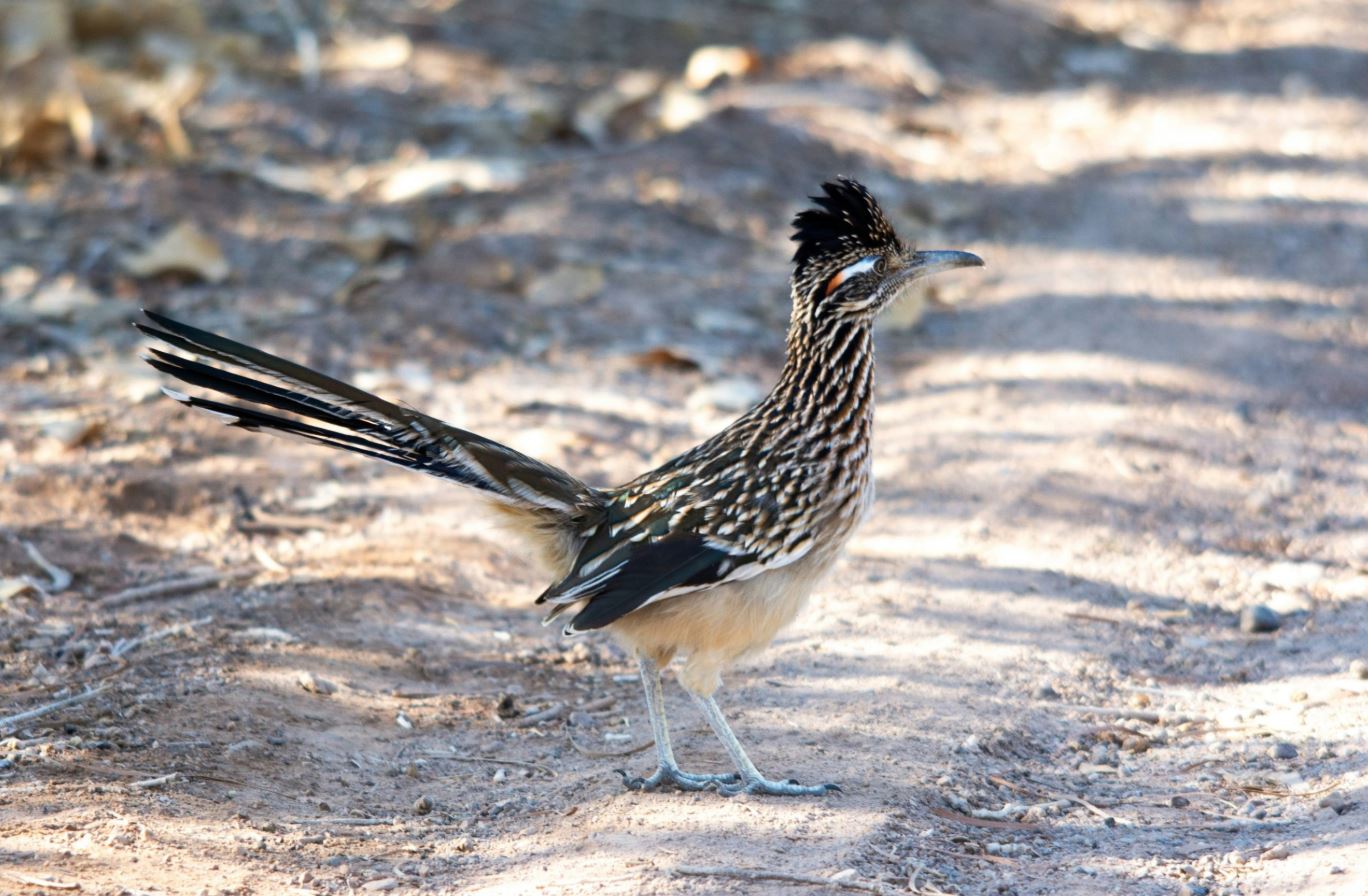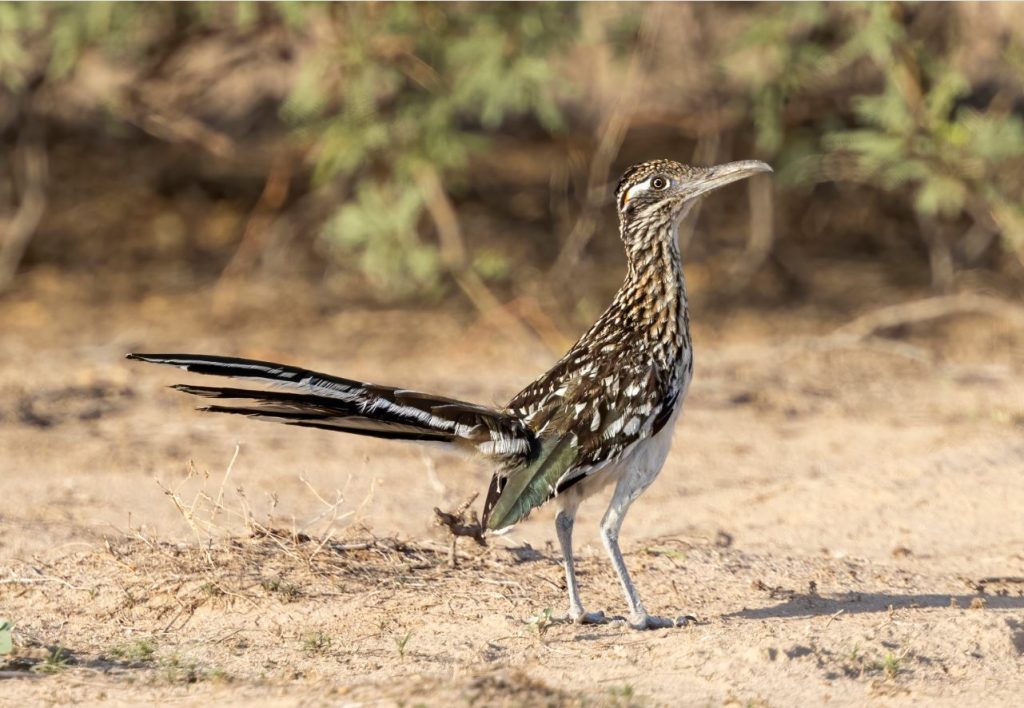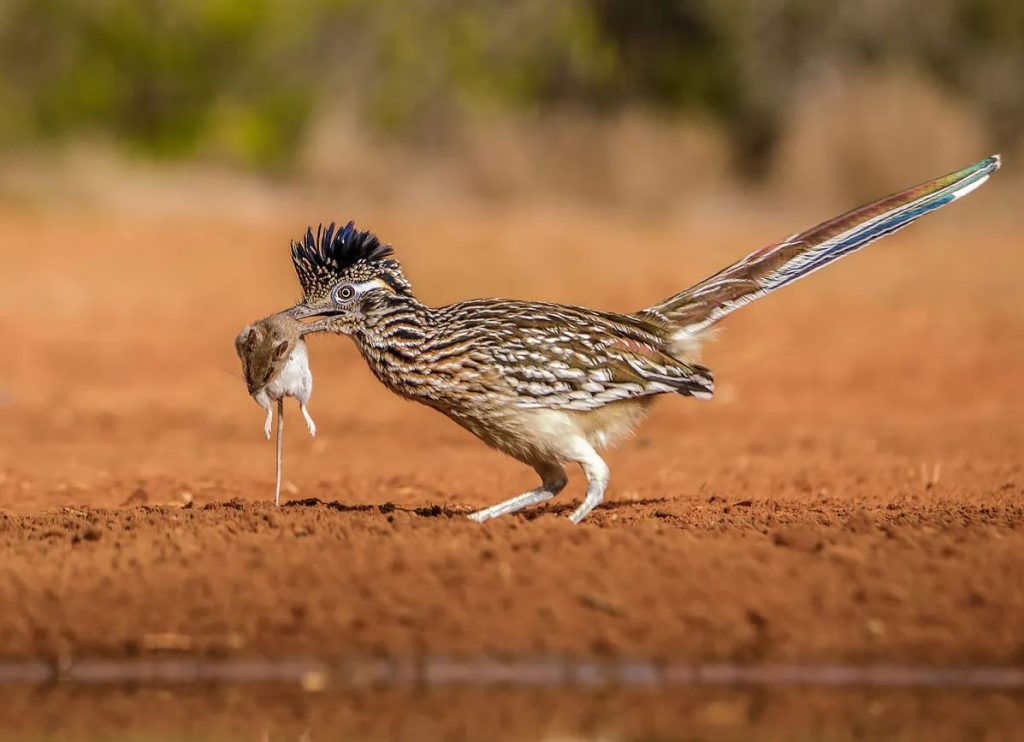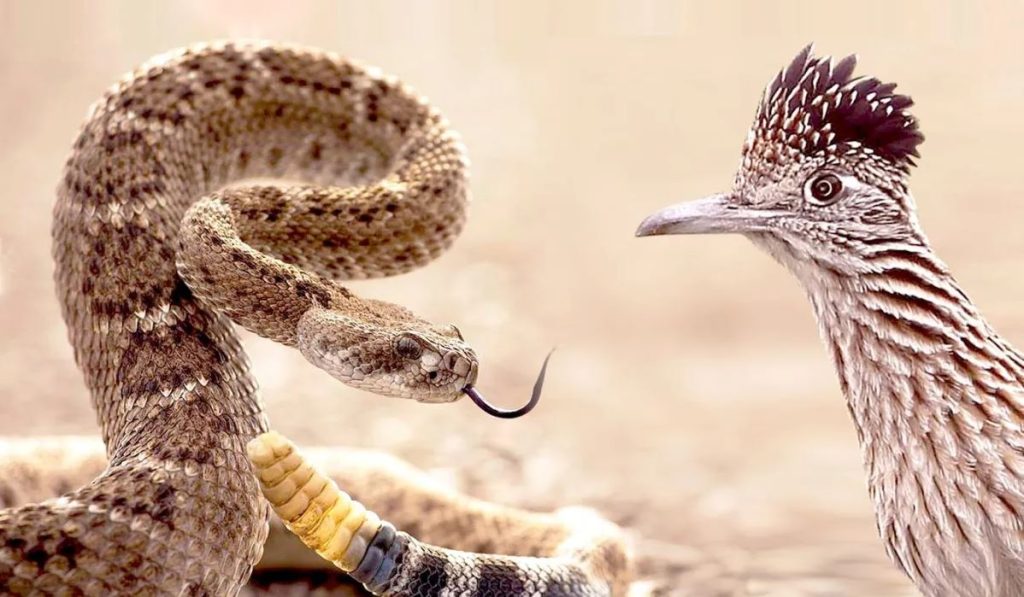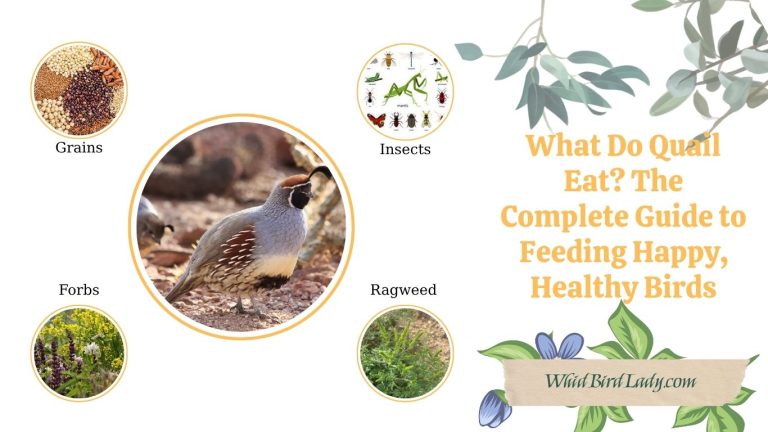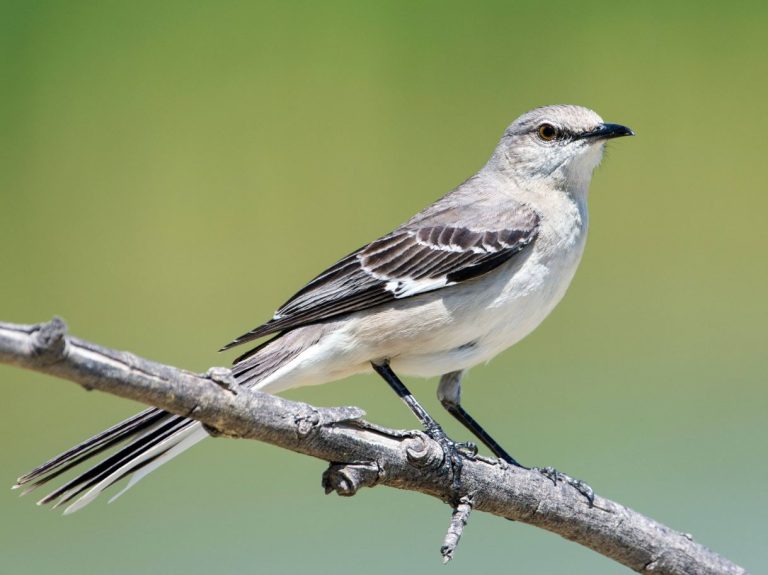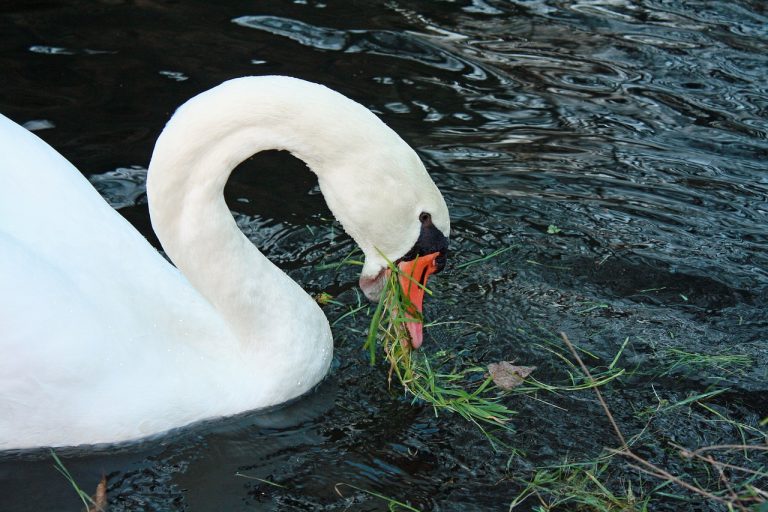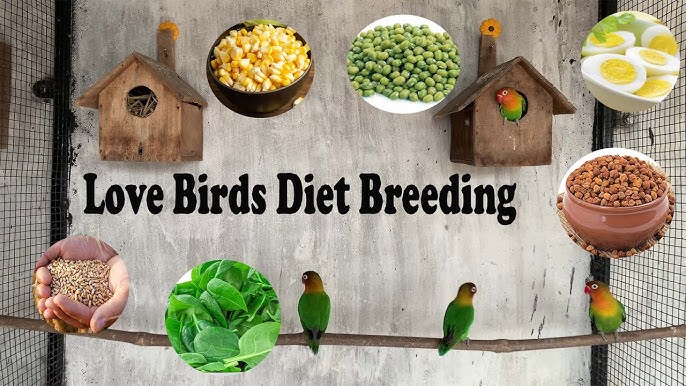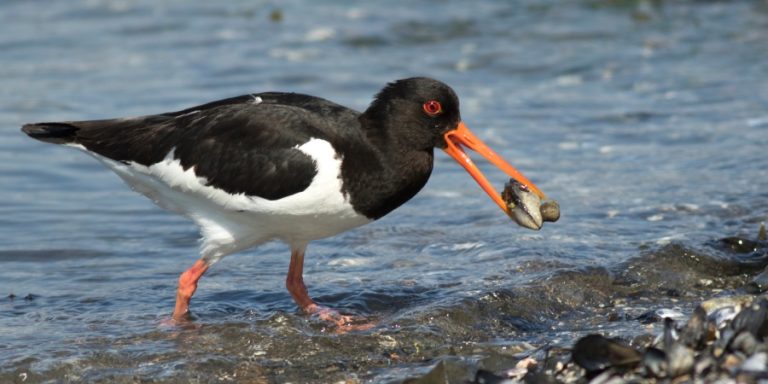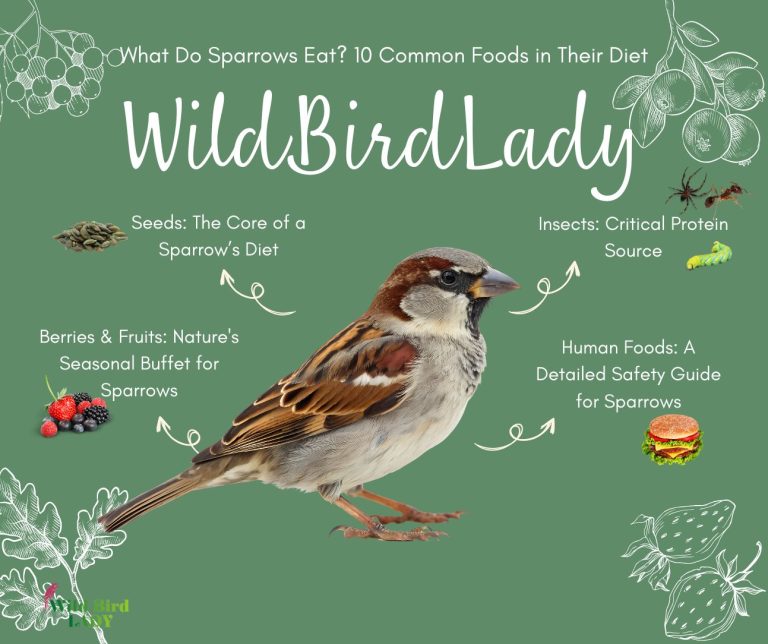What Is a Roadrunner? Meet the Speedy Desert Bird That Eats Rattlesnakes!
When you hear the word “roadrunner,” you might picture a blue blur zipping past a frustrated coyote. But behind the famous roadrunner cartoon lies a real bird—fast, fearless, and full of surprises. So, what is a roadrunner, really? Let’s take a deep dive into the world of this fascinating desert dweller, including what roadrunners eat, how fast roadrunners really are, and what makes them one of North America’s most extraordinary birds.
What Is a Roadrunner?
The roadrunner is a member of the cuckoo family (Cuculidae) and is known for its terrestrial lifestyle, zippy speed, and bold behavior. There are two species:
- Greater Roadrunner (Geococcyx californianus) — found in the southwestern United States and Mexico.
- Lesser Roadrunner (Geococcyx velox) — found in Mexico and Central America.
These birds are perfectly adapted to life in arid environments, like deserts and scrublands. They have strong legs, long tails for balance, and a head crest that rises when they’re excited or alert.
Physical Features
- Size: 18 to 24 inches long
- Weight: Around 10–14 ounces
- Plumage: Mottled brown and white with a shaggy crest
- Tail: Long and stiff, often held upright
- Beak: Strong, downward-curved—perfect for catching prey
Despite being able to fly short distances, roadrunners prefer running and are mostly seen darting across roads, hence the name.
How Fast Is a Roadrunner?
One of the most iconic things about roadrunners is their speed. But how fast is a roadrunner, really?
- Top Speed: Up to 20 miles per hour (32 km/h)
That’s faster than most humans can sprint! Their long legs and low-slung posture allow them to run with incredible agility, weaving through cacti and brush while chasing prey or evading predators.
Unlike the roadrunner cartoon, where the bird defies physics, the real bird doesn’t leave behind clouds of smoke—but it’s still an impressive runner by any standard.
What Do Roadrunners Eat?
The roadrunner’s diet is where things get truly wild. These birds are opportunistic carnivores with an astonishingly wide menu. If it crawls, hops, slithers, or flutters—and fits in their beak—it’s fair game.
Typical Roadrunner Diet:
- Insects: Grasshoppers, beetles, crickets, caterpillars, moths
- Arachnids: Spiders, scorpions, even tarantulas
- Reptiles: Small lizards, geckos, skinks, and venomous snakes like rattlesnakes
- Small mammals: Mice, young rats, and shrews
- Birds and eggs: Hatchlings and unattended nests
- Amphibians: Frogs, toads, and even small salamanders
When protein-rich prey is less abundant, roadrunners will also supplement their diet with:
- Fruits: Prickly pear cactus, berries, and desert fruits
- Seeds and nuts
- Carrion: They won’t turn down roadkill or carcasses in dry spells
Their opportunistic nature and keen eyesight allow them to catch fast, dangerous, or hard-to-see prey. A roadrunner may stalk its target with stealth and patience, then dash forward and strike with surgical precision.
Do Roadrunners Really Eat Rattlesnakes?
Absolutely! One of the most jaw-dropping behaviors of the roadrunner is its ability to kill and eat venomous snakes, including young rattlesnakes. This feat is made possible by a combination of speed, agility, and tactical smarts.
Roadrunners have been observed:
- Distracting the snake with wing feints
- Attacking quickly, usually aiming for the head
- Slamming the snake’s body or skull against a hard surface like a rock
Sometimes, a pair of roadrunners will tag-team a snake—one distracting it while the other lands a killing blow. Once the snake is subdued, it’s swallowed whole, often headfirst.
It’s a high-risk, high-reward meal—but roadrunners are built for the challenge.
Watching a roadrunner take down a snake is like watching nature’s own martial arts champion in action. Quick reflexes, perfect timing, and a fearless attitude make them one of the desert’s top predators.
Roadrunner Behavior and Adaptations
Roadrunners are incredibly well-adapted to survive the extreme conditions of arid environments. From desert heat to scarce water sources, here’s how these birds not only cope—but thrive.
1. Thermoregulation
To stay warm during chilly desert mornings, roadrunners expose a patch of dark skin on their back to the sun, fluffing their feathers to absorb heat efficiently. As temperatures rise, they become less active and seek shade, conserving moisture and energy.
2. Water Conservation
Roadrunners rarely need to drink water. Their carnivorous diet provides enough moisture, and their kidneys are highly efficient, producing concentrated waste to minimize water loss. They also have specialized nasal glands to excrete excess salt—an unusual but useful trait for land birds.
3. Vocalizations
While the cartoon gave them a famous “meep meep,” real roadrunners make a range of sounds that reflect their mood and intentions:
- Low cooing: Used in courtship or communication between mates.
- Beak clacking: A sharp sound made during threats or territorial disputes.
- Whining or barking: Emitted when alarmed, especially near the nest.
These calls are often paired with visual cues, like crest raising or tail flicking.
4. Mating and Nesting
Roadrunners form monogamous pairs during the breeding season. The male courts the female by offering food—like a juicy lizard—and performing ritual dances with tail fanning and head bobbing. If accepted, the pair co-builds a nest in shrubs, small trees, or cactus plants.
Both parents take turns incubating the eggs and feeding the hatchlings, which fledge within about 18–20 days.
Roadrunner Cartoon vs. Real Life
The roadrunner cartoon from Looney Tunes made this bird famous, but how accurate is it?
| Feature | Cartoon | Real Roadrunner |
|---|---|---|
| Speed | Super-sonic | 20 mph (still fast!) |
| Sound | “Meep meep!” | Cooing and clacking |
| Behavior | Outwits coyotes | Avoids predators like hawks and snakes |
| Habitat | Desert roads | Deserts, scrublands, and grasslands |
| Diet | Unclear | Carnivore (including snakes!) |
While the cartoon exaggerates a lot, it got one thing right: roadrunners are incredibly fast, and they do live in deserts.
Where Can You See Roadrunners?
If you’re hoping to spot a real-life roadrunner, here’s where to look:
- Southwestern U.S.: Arizona, New Mexico, Texas, California
- Mexico and Central America: For both Greater and Lesser Roadrunners
Look for them running across back roads, basking in the morning sun, or zipping between desert shrubs. They’re usually solitary but may be seen in pairs during the breeding season.
Cultural Significance
Roadrunners have long been part of Native American lore and Southwestern symbolism:
- Zuni and Hopi tribes: Consider the roadrunner a symbol of protection.
- Folklore: Believed to ward off evil spirits and bring good luck.
- State Symbol: The Greater Roadrunner is the state bird of New Mexico.
Conservation Status
Good news: Roadrunners are not currently endangered.
- IUCN Status: Least Concern
- Threats: Habitat loss due to development and road collisions
- Conservation Efforts: Educating the public and protecting desert habitats
Despite their resilience, roadrunners still benefit from habitat conservation and wildlife-friendly policies.
5 Incredible Roadrunner Facts
- Feathered Ninjas in Action
Roadrunners aren’t just fast on the ground—they’re agile in the air too. These birds can leap straight up to snatch flying insects with pinpoint accuracy. Whether it’s a buzzing grasshopper or a startled moth, a roadrunner can time its jump and grab its prey mid-air like a stealthy desert ninja. - Built-In Steering System
While sprinting at speeds up to 20 mph, roadrunners rely on their long, stiff tails to act as rudders. This adaptation allows them to change direction instantly while chasing prey through uneven terrain. It’s like having a built-in stabilizer that lets them zip through cactus patches and rocky slopes without missing a beat. - Fearless Eaters
Roadrunners have one of the boldest palates in the bird world. They won’t hesitate to pounce on venomous creatures like scorpions and even large tarantulas. On occasion, they’ve been observed raiding nests to consume baby birds—making them both impressive and intimidating predators of the desert. - Superior Desert Grip
Their zygodactyl feet—two toes facing forward and two backward—give them excellent grip and balance. This foot structure not only helps them perch securely but also provides stability when sprinting or wrestling with struggling prey like snakes and lizards. - Mastering Desert Temperatures
In the chilly desert night, a roadrunner’s body temperature can drop to conserve energy—a process known as controlled hypothermia. Come morning, they warm up quickly by exposing dark skin patches on their back to the sun, acting like living solar panels. It’s an energy-efficient trick that allows them to hit the ground running every day.
Frequently Asked Questions About Roadrunners
1. Are roadrunners fast enough to outrun predators?
Yes! Roadrunners can reach speeds of up to 20 mph, which helps them evade predators like hawks, snakes, and coyotes. Their agility and zigzag running pattern make them especially hard to catch.
2. Can roadrunners fly?
Roadrunners can fly short distances but rarely do. They prefer running and only take to the air when absolutely necessary, such as escaping danger or reaching a nest.
3. Do roadrunners really eat snakes?
Absolutely. Roadrunners are among the few birds that can kill and eat venomous snakes like rattlesnakes. They use speed, agility, and strategic attacks to avoid being bitten.
4. What’s the difference between a Greater and Lesser Roadrunner?
The Greater Roadrunner is larger and found primarily in the southwestern U.S. and Mexico, while the Lesser Roadrunner is smaller and found in Central America and southern Mexico. Both share similar diets and behaviors.
5. What sound does a real roadrunner make?
Unlike the cartoon’s “meep meep,” real roadrunners produce low cooing sounds, beak clacking, and occasional whines or barks, especially during courtship or when alarmed.
6. Are roadrunners friendly to humans?
Roadrunners are shy and typically avoid humans, but in some areas, they’ve grown accustomed to people and may be seen near homes or roadsides, especially where food is available.
7. Is the roadrunner endangered?
No. The Greater Roadrunner is listed as a species of Least Concern by the IUCN. However, habitat loss and vehicle collisions pose localized threats.
8. What’s the cultural significance of roadrunners?
Many Native American tribes regard the roadrunner as a symbol of protection and good fortune. It’s also the official state bird of New Mexico.
Final Thoughts
So, what is a roadrunner? It’s more than just a cartoon character or a flash across the desert road. It’s a highly adapted, cunning, and charismatic bird with a taste for dangerous prey. From rattlesnakes to rodents, the roadrunner’s diet and behavior reveal a creature built for survival—and speed.
Whether you’re a birdwatcher, a wildlife enthusiast, or just someone who grew up watching the roadrunner cartoon, it’s hard not to be amazed by the real deal.
Keep your eyes on the desert horizon. You never know when a blur of feathers might dart across your path.
Read Also: What Do Flamingos Eat? All You Need to Know

